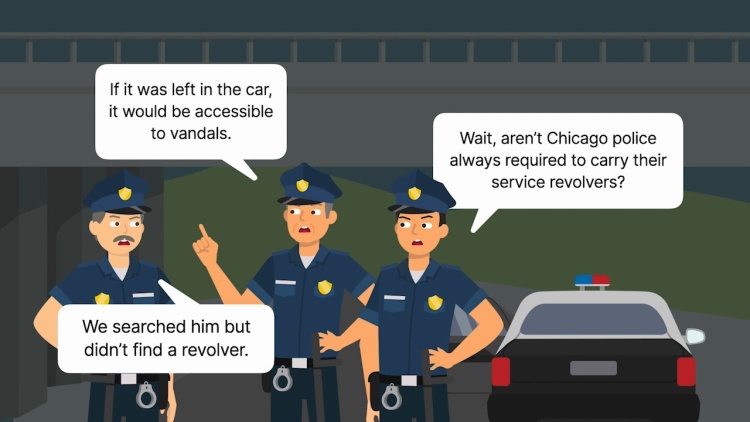Cady v. Dombrowski
United States Supreme Court
413 U.S. 433 (1973)
- Written by Salina Kennedy, JD
Facts
Chester Dombrowski (defendant), a Chicago police officer, drove drunk and crashed his car on a highway in a small town in Wisconsin. Dombrowski was injured in the accident, and his car was disabled. Police arrested Dombrowski, who was incoherent, for drunk driving. They then took him to the hospital, where he lost consciousness and was admitted to the hospital overnight. The small-town police station did not have an impound lot, so police had Dombrowski’s car towed to a privately owned service station, where it was left without a police guard. Believing that Chicago officers were required to always carry their service revolvers and finding that Dombrowski did not have physical possession of his revolver, police searched his car for the weapon. At trial, police testified that the search was standard procedure for their department and that it was undertaken to protect the public by preventing the weapon from falling into the wrong hands. The search of the vehicle revealed evidence that ultimately led police to the body of a deceased man. Dombrowski was charged with the man’s murder. The trial court admitted evidence stemming from the warrantless search of the car, and Dombrowski was convicted. Dombrowski appealed to the Wisconsin Supreme Court, which affirmed his conviction. Dombrowski filed a habeas corpus petition in federal district court, which denied the petition. The court of appeals reversed the denial. The United States Supreme Court granted certiorari.
Rule of Law
Issue
Holding and Reasoning (Rehnquist, J.)
What to do next…
Here's why 899,000 law students have relied on our case briefs:
- Written by law professors and practitioners, not other law students. 47,000 briefs, keyed to 994 casebooks. Top-notch customer support.
- The right amount of information, includes the facts, issues, rule of law, holding and reasoning, and any concurrences and dissents.
- Access in your classes, works on your mobile and tablet. Massive library of related video lessons and high quality multiple-choice questions.
- Easy to use, uniform format for every case brief. Written in plain English, not in legalese. Our briefs summarize and simplify; they don’t just repeat the court’s language.





